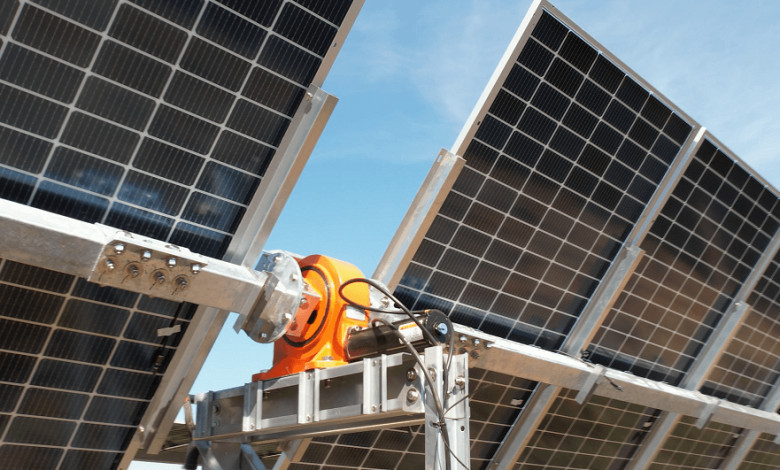views
As the global push for renewable energy accelerates, solar power continues to take center stage. Among the innovations transforming the solar industry, solar trackers stand out as a key technology maximizing the efficiency and output of solar energy systems. With growing demand for clean energy and technological advancements, the solar tracker market holds immense potential—and it's just beginning to shine.

What Are Solar Trackers?
Solar trackers are devices that orient solar panels toward the sun to capture the maximum amount of sunlight throughout the day. Unlike fixed-tilt systems that remain stationary, solar trackers follow the sun’s path, either along a single axis (east to west) or dual axes (east-west and up-down). This dynamic adjustment increases the energy output of solar installations by 15% to 30% compared to stationary systems.
Driving Forces Behind Market Growth
Several factors are fueling the rapid expansion of the solar tracker market:
1. Rising Global Energy Demand
With population growth, urbanization, and increasing electrification, global energy demand continues to climb. Solar energy—being abundant, clean, and increasingly cost-effective—is becoming a preferred solution. Solar trackers enhance energy output without expanding land use, making them attractive for utility-scale projects.
2. Government Incentives and Policies
Governments worldwide are implementing incentives to accelerate the transition to renewable energy. Tax credits, subsidies, and favorable regulatory policies have boosted investments in solar infrastructure. For instance, the U.S. Inflation Reduction Act includes provisions supporting solar project development, directly benefiting the solar tracker segment.
3. Falling Costs and Improving ROI
Technological advancements have driven down the cost of solar components, including trackers. At the same time, better designs and smarter control systems have improved reliability and reduced maintenance needs. As a result, solar trackers offer a higher return on investment, especially in regions with high solar irradiation.
4. Grid Parity and Decentralization
In many countries, the cost of solar power has reached or dropped below that of traditional energy sources—a milestone known as grid parity. This shift is encouraging broader adoption of solar solutions, especially in remote or off-grid areas, where trackers can optimize limited space and sunlight availability.
Market Trends and Opportunities
The global solar tracker market is projected to grow significantly over the next decade. According to market research, it was valued at over $7 billion in 2023 and is expected to reach $18–20 billion by 2030, growing at a CAGR of 13–15%.
Utility-Scale Projects Leading the Way
Utility-scale solar farms are the primary adopters of tracker systems, as they benefit the most from the increased energy yield. Many of the world’s largest solar projects now incorporate solar trackers to maximize performance.
Emerging Markets Show Promise
Countries like India, Brazil, Mexico, South Africa, and parts of Southeast Asia are rapidly expanding their solar capacities. These regions, with high solar insolation and favorable policies, represent untapped markets for solar tracker manufacturers.
Technological Innovations
Innovation is reshaping the landscape. Smart trackers equipped with AI, IoT, and machine learning are now capable of predictive adjustments based on weather, shading, and panel performance. These smart systems further boost efficiency and help reduce operating costs.
Shift Toward Dual-Axis and Hybrid Systems
While single-axis trackers dominate the market due to their lower cost, dual-axis trackers are gaining popularity in niche applications and high-radiation areas. Hybrid systems that combine the benefits of both may play a role in future development, offering flexibility and improved yields.
Challenges to Watch
Despite its potential, the solar tracker market faces several challenges:
-
High Initial Costs: Trackers are more expensive upfront than fixed systems, which can deter small-scale users or projects with tight budgets.
-
Maintenance Needs: Moving parts and control systems require regular maintenance, particularly in harsh environments.
-
Land and Site Constraints: Trackers require flat or gently sloping land and are sensitive to site-specific factors like wind and soil type.
However, these challenges are steadily being addressed through innovation and improved engineering standards.
Conclusion: A Market on the Move
The solar tracker market is poised for strong, sustained growth. As solar power becomes a cornerstone of global energy strategy, technologies that maximize its potential—like solar trackers—will play an increasingly vital role. With expanding adoption, falling costs, and a growing emphasis on efficiency, the future of the solar tracker market looks bright.












![What Is The QuickBooks Enterprise Support Number [[GET Quick Assistance]]](https://timessquarereporter.com/public/index.php/upload/media/posts/2025-06/04/what-is-the-quickbooks-enterprise-support-number-get-quick-assistance_1749095947-s.jpg)









Comments
0 comment